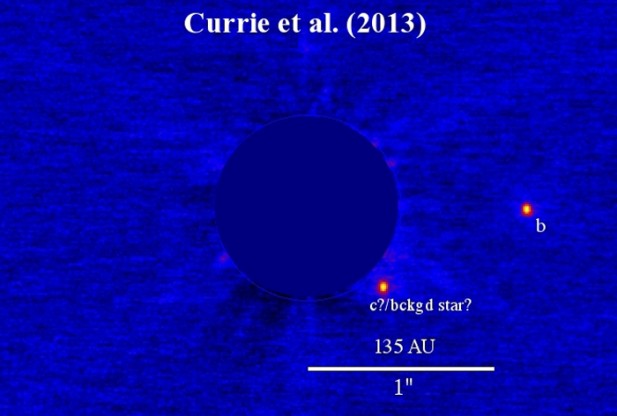
In other parts of the galaxy, stars exist that are only a tiny fraction of the size of our Sun, yet scientists have discovered planets that are many times larger than Jupiter. At around a dozen Jupiter-masses, the line between star and planet begins to blur, and astronomers refer to these objects as brown dwarfs.
They are massive enough that simple proton-proton fusion exists in their cores, yet the energy produced by this mechanism is not sufficient enough to sustain it as a star. For this reason brown dwarfs are sometimes also known as failed stars. However, new data is complicating their classification even further.
Located about 440 light-years from Earth is a strange object that has the properties of a brown dwarf. However, a careful study of its mass indicates that it is not massive enough to be categorized as such.
"We have very detailed measurements of this object spanning seven years, even a spectrum revealing its gravity, temperature, and molecular composition. Still, we can't yet determine whether it is a planet or a failed star - what we call a 'brown dwarf'. Depending on what measurement you consider, the answer could be either," said Thayne Currie, a post-doctoral fellow at the University of Toronto.
Even more perplexing is determining how the object - called ROXs 42Bb - formed. At roughly 30 times the orbit of Jupiter from its host star, the dwarf has an immense amount of mass for the size of its orbit. Since most solar system formation models suggest that Jupiter-like planets form by condensing a solid core, then accreting gaseous material around it, such objects should form more readily near the solar system center where the accretion process is more efficient.
However, one alternative is that the planets take shape from instabilities in the gas disk as a solar system is condensing. In this case, the process would be more efficient farther out from the star.
It seems that smaller planets form closer in - within about 15 times Jupiter's orbit - due to core accretion, while much larger objects like brown dwarfs or even companion stars form at distances at least 50 times Jupiter's orbital separation. Of course, this leaves a considerable gap in between. Currie and his colleagues suggest that objects like ROXs 4sBb may be the missing link.
"It's very hard to understand how this object formed like Jupiter did. However, it's also too low mass to be a typical brown dwarf; disk instability might just work at its distance from the star. It may represent a new class of planets or it may just be a very rare, very low-mass brown dwarf formed like other stars and brown dwarfs: a 'planet mass' brown dwarf," Curry explains.
"Regardless, it should spur new research in planet and star formation theories, and serve as a crucial reference point with which to understand the properties of young planets at similar temperatures, masses and ages."



Everything that happens is natural.
Planets are stage of the stellar evolution.
The destiny of the planets is to become stars.
Going from rocky worlds, through gas stage to gas giants and then leaving home star system finding a partner and forming new ( double ) star system.
The new double star system creates its own planetary nursery ( comet cloud ) around one of the stars.
From there planetesimals are coming into inner orbit to form moons and planets, therefore completing the creation cycle.
[Link]